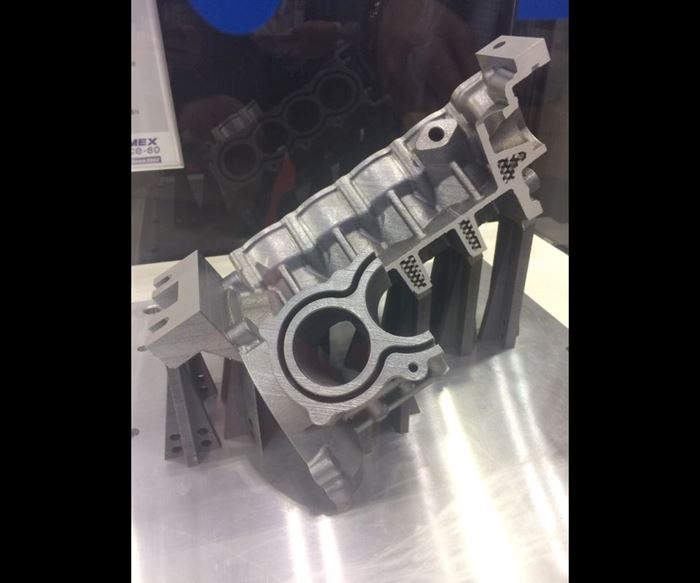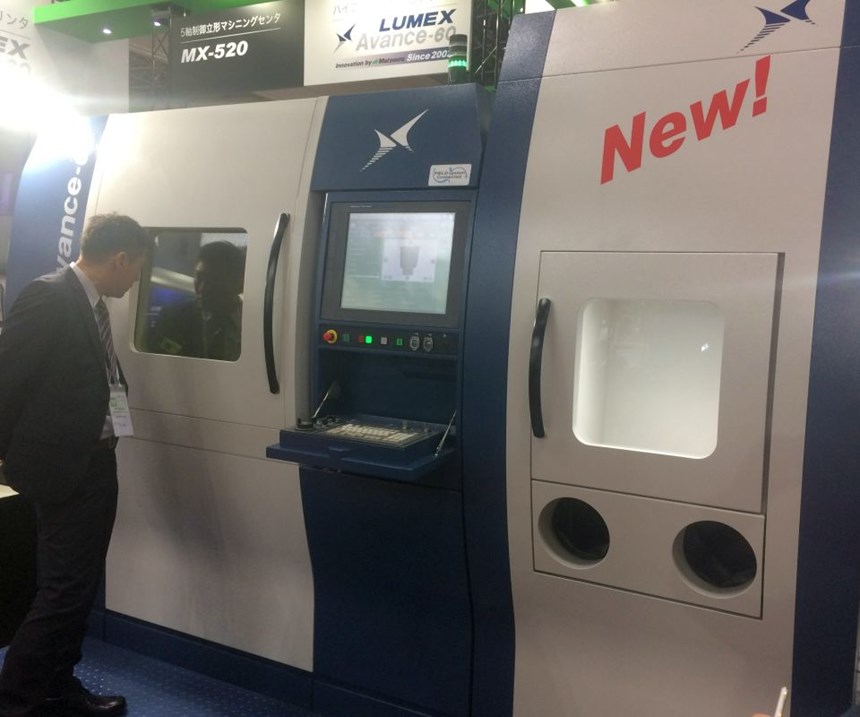Hybrid Additive Manufacturing Machine Steps up in Size
The bigger size of this combination milling/laser-metal-sintering machine could enable it to enter new markets.
Share





Hybrid additive manufacturing machines combine some degree of layer-by-layer building using an additive process with conventional subtractive machining. For example, the idea behind the Lumex Avance 25 from Matsuura, which offers laser metal sintering via a Yb fiber laser and high-speed milling, is to speed the production of primarily mold and die components. Laser sintering adds layers of material, and the machine’s milling spindle subsequently machines the material to ensure a quality surface finish. Producing mold cores and cavities in this way leverages additive’s capabilities to produce molds with conformal cooling channels, and to make sintering density changes in molding applications that require placement of porous structures to facilitate gas venting. In addition, laser sintering enables deep features to be produced by building them one layer at a time, eliminating the need to burn them via EDM.
The company has since introduced a larger model, the Lumex Avance 60, which opens this technology to bigger applications in new industries, such as aerospace and automotive. This model accommodates a maximum XYZ workpiece size of 600 × 600 × 500 mm (compared to 260 × 260 × 100 mm for the Lumex Avance 25 model) and maximum weight of 1,300 kg. It also has a 1-kW Yb fiber laser source compared to 400 W for the Lumex Avance 25 model, increasing sintering speed. Its milling spindle ranges to 45,000 rpm and automatic toolchanger carousel has the capacity to hold 20 tools (maximum tool diameter is 10 mm).
The eight-cylinder engine block on display at the Japan International Machine Tool Fair (JIMTOF) (seen above) shows one possible application of this technology, although it was just a partial build, in part, to show areas where the additive process was able to reduce weight. An entire 9.6-kg version of this engine block produced from AlSi10Mg material (including supports) was completed in 95 hours (90 hours for sintering and 5 hours for milling). Total production time, including support design, programming, fixture design/manufacturing, setup, and so on was 15 days. Although this might sound like a long time, company tests on a five-axis machining center showed it would take approximately 22 days to machine the engine block from a solid blank, including time for fixture design/manufacturing, programming, machine setup and so on.
The Lumex Avance 60 at the show also included the company’s automatic powder recovery (APR) system that filters unused powder via a sieve and collects it in a tank. That powder is automatically delivered back to the machine for reuse. A range of powder materials are available from the company, including maraging steel, TI6A4V titanium, 630 and 316L stainless steels, cobalt chrome superalloy, nickel 718 and AlSi10Mg.
Related Content
-
Chuck Jaws Achieve 77% Weight Reduction Through 3D Printing
Alpha Precision Group (APG) has developed an innovative workholding design for faster spindle speeds through sinter-based additive manufacturing.
-
Digital Thread Enables First-Time-Right 3D Printing
Connecting all stages of manufacturing, from design to postprocessing, helps break down barriers to industrializing additive manufacturing.
-
Additive/Subtractive Hybrid CNC Machine Tools Continue to Make Gains (Includes Video)
The hybrid machine tool is an idea that continues to advance. Two important developments of recent years expand the possibilities for this platform.























